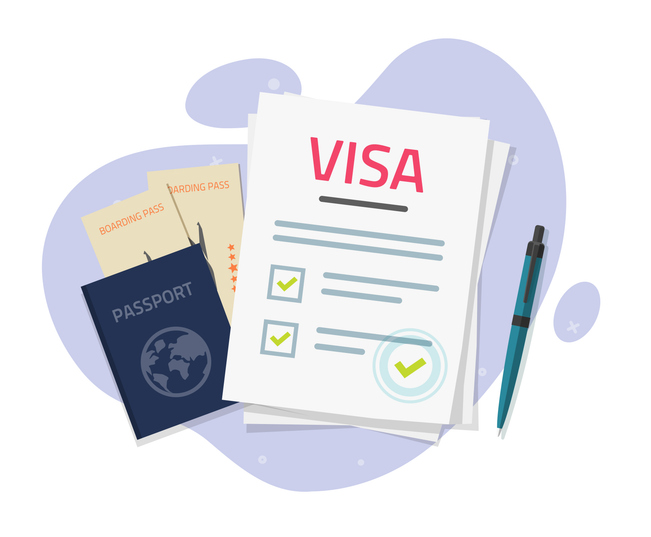Europe's 90/180-Day Rule: How Long Can You Stay Visa-Free in the Schengen Area?
Last Updated: July 5, 2025
Planning a trip to Europe from the UK, US, or another non-EU country often comes with a crucial question: how long can you stay without needing a visa?
The fundamental rule governing short-term, visa-free stays in most of Europe is the **Schengen Area's 90/180-day rule**.
This means you can stay for a maximum of 90 days within any rolling 180-day period across the entire Schengen Zone.
This article will break down what the 90/180-day rule means for your travel plans, clarify which countries are included, explain how to accurately calculate your days, and touch upon important upcoming changes like the Entry/Exit System (EES) and ETIAS travel authorization.
Travel to the EU for UK Citizens
Since the United Kingdom left the EU in January 2020, UK citizens are no longer entitled to the freedom of movement that allowed them to live, work, and travel across EU member states without restriction. However, UK nationals can still travel to the EU without a visa for short stays, thanks to the visa-free travel arrangements that apply to many non-EU countries.
Schengen Area Rules: Most EU countries are part of the Schengen Area, a zone comprising 27 European countries that have abolished passports and other types of border control at their mutual borders. UK citizens can visit the Schengen Area for up to 90 days within a 180-day period without needing a visa. This 90-day limit applies to the entire Schengen Area, not each individual country. It’s important to note that the 90 days are cumulative, so multiple short trips can quickly add up to the 90-day limit.
Counting the 90 Days: The 90 days are calculated on a rolling basis. This means that each day you spend in the Schengen Area counts towards your total, and you must look back over the previous 180 days to determine how many of those days were spent in the zone. For example, if you spend 30 days in France, leave for a few weeks, and then return to Spain for another 30 days, you have used up 60 of your 90 days.
Consequences of Overstaying: Overstaying the 90-day limit can result in fines, deportation, or being banned from the Schengen Area for a certain period. Therefore, it's crucial to track your days carefully to avoid inadvertently breaking the rules.
Non-Schengen EU Countries: Some EU countries, like Ireland, are not part of the Schengen Area, and different rules apply. For example, UK citizens can visit Ireland without a visa for up to 90 days independently of their time spent in the Schengen Area. Always check the specific entry requirements for each country you plan to visit.
Working or Studying in the EU: If you plan to stay longer than 90 days, work, study, or live in the EU, you will need to apply for the appropriate visa or residence permit. The application process and requirements vary depending on the country.
Travel to the EU for US Citizens
Similar to UK citizens, US nationals can also travel to the Schengen Area without a visa for short stays, though the rules are slightly different.
Schengen Area Rules: US citizens are permitted to stay in the Schengen Area for up to 90 days within a 180-day period without needing a visa. This limit, like for UK travellers, applies to the entire Schengen Area. The 90-day rule is the same for all travellers, and it’s crucial to remember that the 90 days are cumulative across all Schengen countries.
ETIAS Requirement: Starting in 2024, US citizens will need to apply for an ETIAS (European Travel Information and Authorisation System) authorisation before traveling to the Schengen Area. This is not a visa but a travel authorisation, similar to the US ESTA. The ETIAS will be valid for three years and will allow for multiple entries into the Schengen Area as long as the 90-day rule is observed.
Counting the 90 Days: Like for UK travellers, the 90-day period for US citizens is calculated on a rolling basis. Therefore, keeping track of your travel dates is essential to avoid overstaying.
Consequences of Overstaying: If you overstay your 90 days in the Schengen Area, you could face penalties, including fines, deportation, or future entry bans.
Non-Schengen EU Countries: US citizens should also be aware that some EU countries are outside the Schengen Area, such as Bulgaria, Romania, Croatia, and Cyprus. Each of these countries has its own entry requirements and visa rules.
Working or Studying in the EU: For stays longer than 90 days, or if you intend to work or study, a visa or residence permit is required. The process and requirements will vary by country, so it’s important to research and apply well in advance of your trip.
Upcoming Changes to European Travel
For both UK and US citizens, and other visa-exempt non-EU nationals, travel to the Schengen Area remains straightforward for short stays of up to 90 days within any 180-day period. However, it is vital to understand and adhere to the rules to avoid any legal issues or penalties, as significant changes are on the horizon.
The Entry/Exit System (EES)
Expected to begin its phased rollout in October 2025, the Entry/Exit System (EES) is a new automated IT system for registering travelers from non-EU countries each time they cross an external EU border. This system will:
- Replace manual passport stamping with digital records of your entry and exit.
- Collect biometric data, including fingerprints and a facial scan, upon your first entry. This data will then be stored for a period (typically three years).
- Help in automatically identifying overstayers and ensuring adherence to the 90/180-day rule.
Travelers should be prepared for potentially longer processing times during the initial rollout phase as systems are adjusted and travelers register their biometrics for the first time.
The European Travel Information and Authorisation System (ETIAS)
The ETIAS is a new electronic travel authorization that will be required for visa-exempt non-EU nationals, including those from the UK and US, planning short stays in most European countries. While initially anticipated earlier, ETIAS is now expected to launch in the last quarter of 2026.
- It is not a visa, but rather a pre-travel authorization similar to the ESTA system in the United States or the ETA in the UK.
- Travelers will need to apply for ETIAS online before their trip, likely costing €7 (free for under 18s and over 70s), and it will typically be valid for three years.
- The system aims to enhance security by pre-screening travelers before their arrival in Europe.
Planning Your Trip
While these systems are being implemented, it remains crucial to track your travel days within the Schengen Area meticulously. Understanding these upcoming changes is key to ensuring a smooth and compliant European trip.
If your travel plans also include frequent or extended stays in the United Kingdom, you may also be interested in our detailed guide on obtaining a 10-Year Standard Visitor Visa for the UK.














